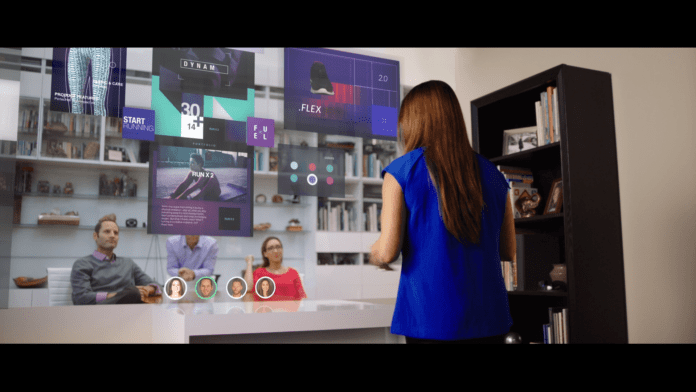Virtual reality gaming. Real-time digital collaboration “walls” for remote work. Interactive, 3D digital projections for learning.
Those are a few of the possibilities for the connected home envisioned in a new aspirational video from CableLabs. Watch it below or on CableLabs’ website.
[embedyt] http://www.youtube.com/watch?v=-kTeavB3IGg[/embedyt]
Phil McKinney, president and CEO of CableLabs, said such a video might seem unusual for a research and testing organization like CableLabs. But McKinney took his cue from experiences with forward-looking videos during his time a decade ago as CTO at Hewlett-Packard, when six such videos were produced, including Roku’s Reward that looked forward to the days of augmented reality games.
For Cablelabs, McKinney said, the “Near Future” video “puts a lot more focus on telling the story of what kind of services do we foresee being in the gigabit or multi-gigabit home.”
In the video, a father rides home in his self-driving car, which promptly begins a data upload once it pulls into the driveway. Inside, a mother is in a live work meeting via a “collaboration wall” that displays necessary information while in an immersive virtual reality. Their daughter is having a virtual reality chat with her grandmother, and eventually the entire family joins in a multiplayer game that turns their home into a white-washed laser-tag-like environment.
The video focuses on augmented reality gaming and person-to-person interactions, learning and other futuristic services, many of them enabled by VR glasses and nary a wire to be seen. These possibilities aren’t just a vision for what the cable industry could provide, McKinney noted; the video is meant to be a vision of what other companies can build if the home network can support next-generation wired and wireless network speeds.
McKinney said DOCSIS 3.1 is in early deployment stages for some cable operators, and that the technology is expected to expand across the country within the next two years to offer one-gigabit, two-gigabit or up to 10-gigabit symmetric upload and download speeds. That level of speed can enable new use cases and services, he said, while adding that consumer equipment and in-home access points will have to be able to handle the higher speeds in order to truly implement a next-generation in-home connected experience.
“This isn’t just about delivering two gigabits to the side of your house,” McKinney said, adding consumers have to have equipment in their homes that can take advantage of the improved network speeds, and that low latency will be particularly important to virtual reality and collaboration walls that are features in CableLabs’ video. In addition, he said, the backhaul capacity and closeness to homes of the cable industry’s infrastructure is likely to be an advantage they can leverage in supporting wireless operators in 5G deployments and extending 5G into the home.
The video is meant to capture what might be possible in the “near future,” or within three to eight years, McKinney explained. That’s just on the far edge of operators’ long-range capital expenditure cycles, so that they have time to think about, digest and plan for networks that will enable new options, possibly along the lines of the ones envisioned in the Near Future video.
“This is first of all, to be an inspiration; and second, to be far enough out that everyone’s got enough runway to consider and make the fight investments in the right parts of the industry so that when all the innovation curves hit, the capacity is there,” McKinney said.

CableLabs looks to the 'near future' for connected home
ABOUT AUTHOR
